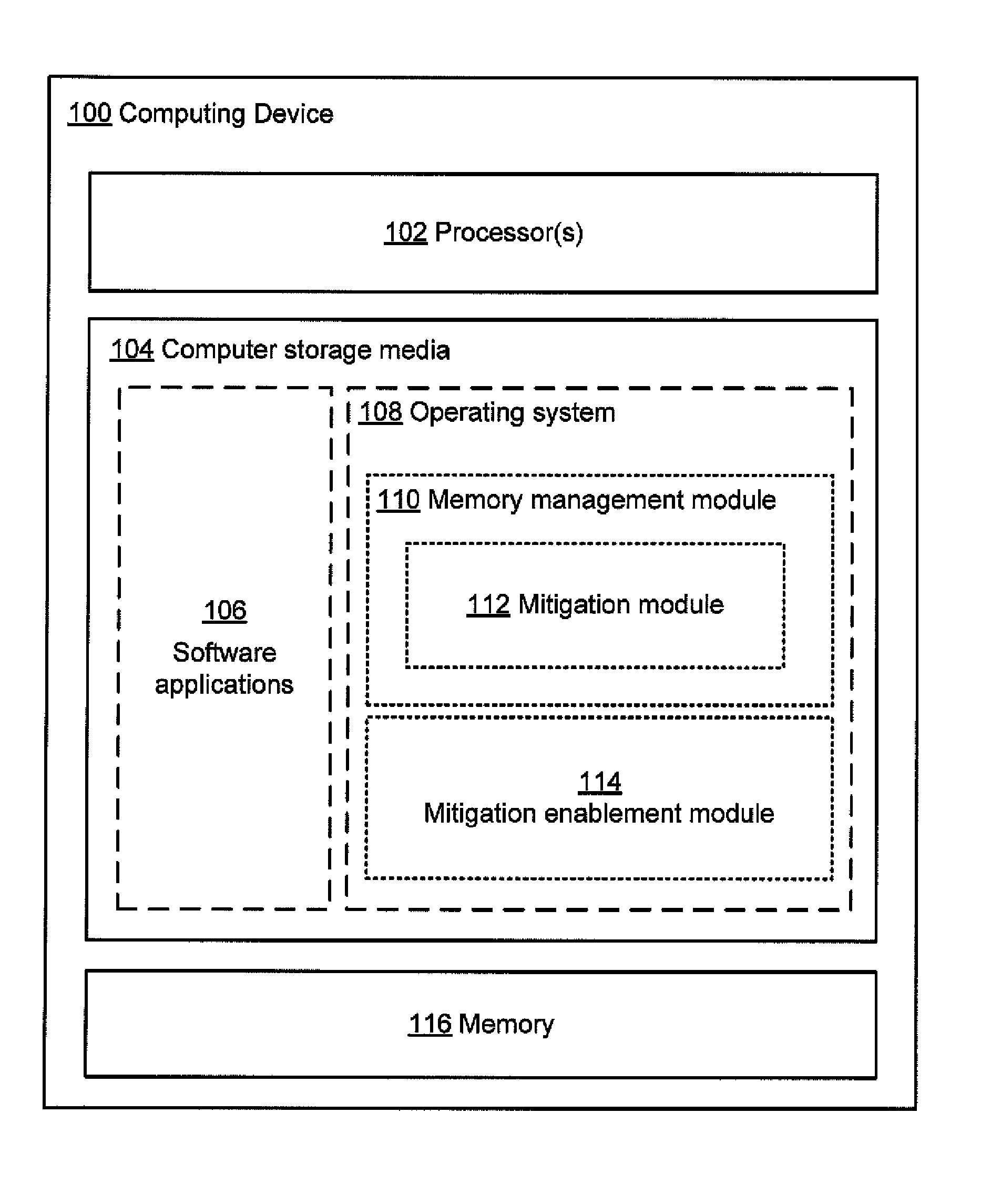Configuration of memory management techniques selectively using mitigations to reduce errors
a memory management and selective technology, applied in error detection/correction, instruments, computing, etc., can solve problems such as software applications that may fail, errors such as these, and may not be able to perform properly or even crash, so as to improve user experience and mitigate errors
- Summary
- Abstract
- Description
- Claims
- Application Information
AI Technical Summary
Benefits of technology
Problems solved by technology
Method used
Image
Examples
Embodiment Construction
[0031]Resource management modules operate in systems having a shared resource, and act as arbiters of that shared resource to ensure that multiple consumers of it do not interfere with one another when attempting to access the resource. A memory management module is one example of such a resource management module. Some computing devices, including single- and multi-purpose computing devices, may execute in parallel applications or other instruction sets related to two or more tasks, and these parallel executions may compete for access to memory. If the two or more applications are coded properly and instructions given to the memory management module are correct, then memory management may be a relatively simple task. Applicants have recognized that, unfortunately, this is not always the case, and applications or instruction sets may crash as a result of programming bugs that cause memory errors. Research by the Microsoft Corporation of Redmond, Wash., for example, has found that pr...
PUM
 Login to View More
Login to View More Abstract
Description
Claims
Application Information
 Login to View More
Login to View More - R&D
- Intellectual Property
- Life Sciences
- Materials
- Tech Scout
- Unparalleled Data Quality
- Higher Quality Content
- 60% Fewer Hallucinations
Browse by: Latest US Patents, China's latest patents, Technical Efficacy Thesaurus, Application Domain, Technology Topic, Popular Technical Reports.
© 2025 PatSnap. All rights reserved.Legal|Privacy policy|Modern Slavery Act Transparency Statement|Sitemap|About US| Contact US: help@patsnap.com



